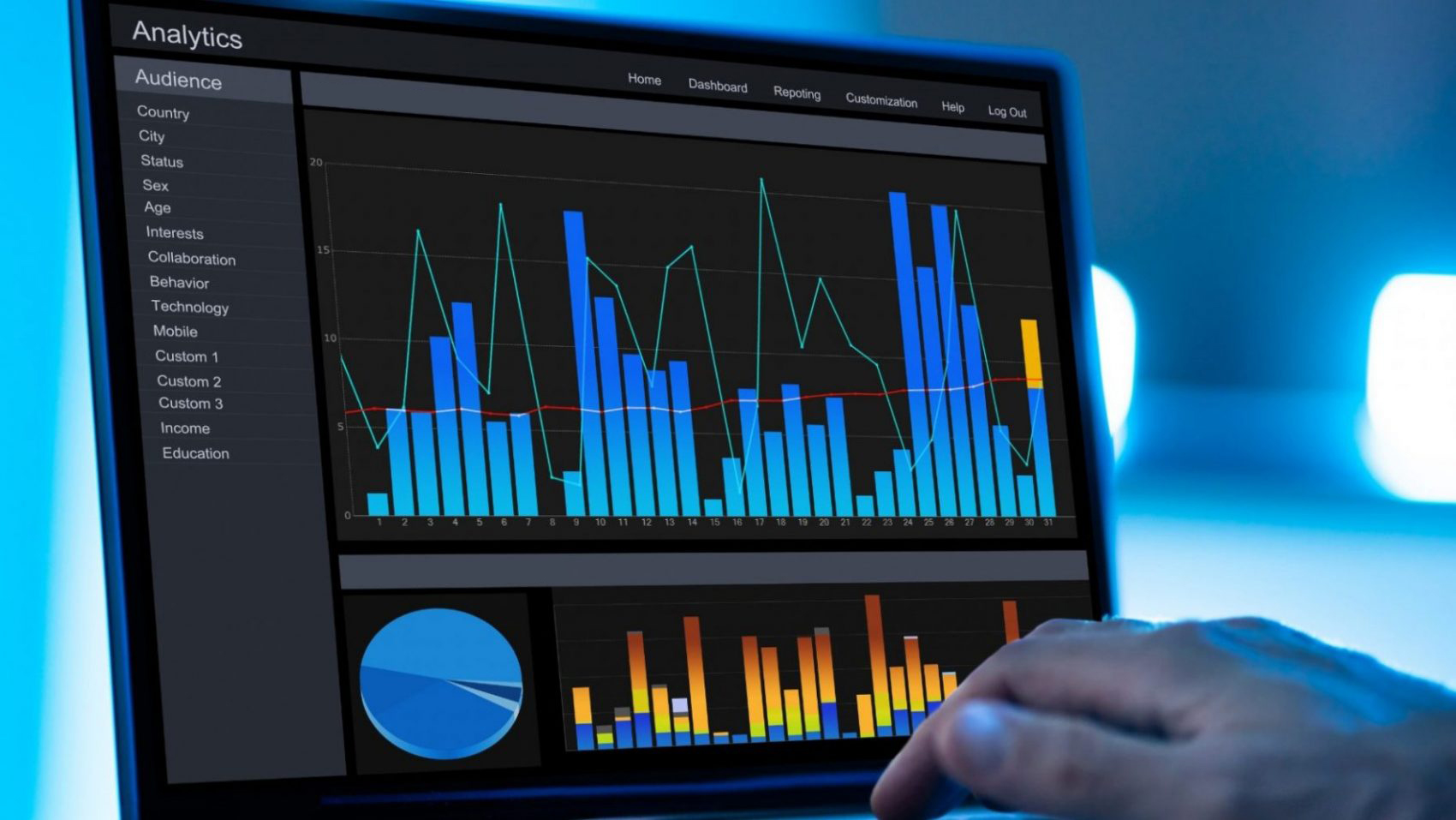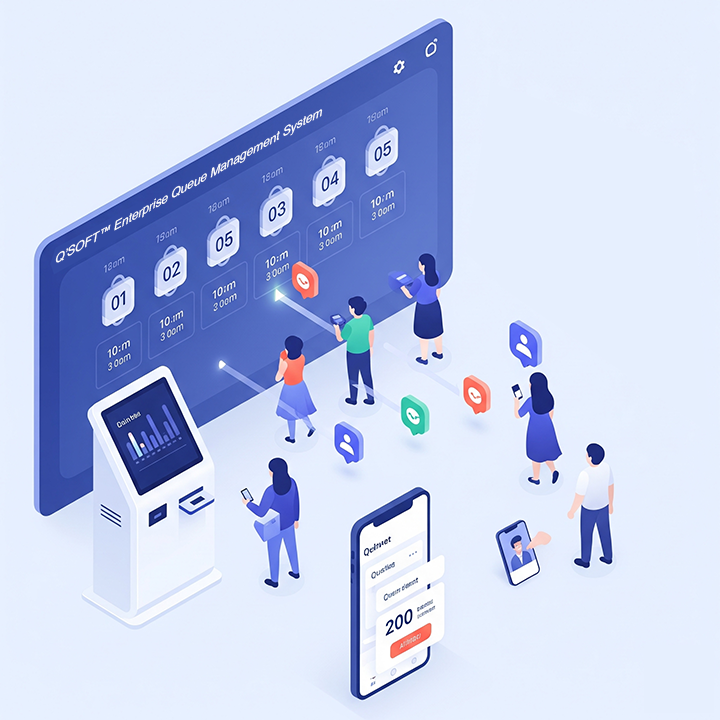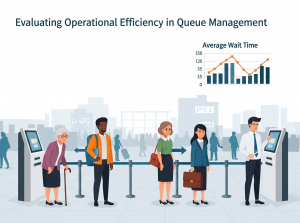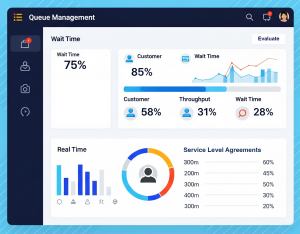
News & Updates

What metrics should you track in queue management systems?
In the digital age, the efficiency of customer flow and service delivery is a defining factor for business success. Whether it’s a bustling hospital, a government office, or a retail giant, the right Enterprise Queue Management System can transform operations, reduce wait times, and elevate customer experiences. However, choosing the optimal queue management solution demands more than just a glance at feature lists; it requires a data-driven approach. By tracking vital metrics such as operational efficiency, customer satisfaction, and first response rates, organisations can make informed choices that drive continuous improvement. This article explores the most up-to-date metrics for evaluating Digital Queue Systems and queue management systems in hospitals, offering actionable insights for businesses seeking to optimise their service delivery and streamline operations. Dive in to discover how the latest trends and performance indicators can empower your enterprise to thrive in a competitive landscape.
Evaluating Operational Efficiency in Queue Management
Operational efficiency stands at the heart of every successful enterprise queue management solution. Businesses must assess how a queue management system impacts their ability to serve customers swiftly and accurately. Metrics such as average service time, queue abandonment rates, and agent utilisation offer a clear window into system performance. As customer expectations for prompt service continue to rise, monitoring these indicators allows organisations to adjust staffing, streamline workflows, and optimise resource allocation.
In recent years, the integration of analytics within Digital Queue Systems has made it easier than ever to collect real-time data on queue lengths and service bottlenecks. Automated dashboards and intelligent reporting tools empower managers to pinpoint inefficiencies and adjust processes accordingly. The result is a more agile operation, capable of adapting to fluctuations in demand and delivering consistent, high-quality service. Ultimately, keeping a close eye on operational efficiency metrics ensures that an Enterprise Queue Management System delivers measurable ROI and tangible business benefits.
Average Service Time
The average service time metric tracks the duration it takes to serve each customer, from initial interaction to resolution. A lower average indicates streamlined processes and effective staff training, while a higher figure may signal bottlenecks or understaffing. Comparing this metric across different service points highlights areas for targeted improvement and resource reallocation.
Queue Abandonment Rate
The queue abandonment rate measures the percentage of customers who leave before receiving service. High rates often point to excessive wait times or poor communication. Monitoring this metric helps businesses identify when and why customers are leaving, allowing for timely interventions such as staff redeployment or digital notifications to improve retention.
Agent Utilisation
Agent utilisation assesses how effectively staff members are deployed throughout their shifts. An optimal utilisation rate ensures that employees are neither overwhelmed nor underused, balancing workload and preventing burnout. Regular analysis of this metric supports smarter scheduling and a better customer experience.
Enhancing Customer Experience with Digital Queue Systems
The modern Digital Queue System is designed to do more than just manage lines it shapes the entire customer journey. Metrics such as Net Promoter Score (NPS), Customer Satisfaction (CSAT), and feedback submission rates provide a holistic view of how digital solutions are perceived by end users. These insights are crucial in a world where customer loyalty hinges on seamless, frustration-free interactions.
Recent advancements in mobile queueing and virtual ticketing have empowered customers to manage their own wait times, further boosting satisfaction levels. By tracking and analysing experience-related metrics, organisations can tailor their services to meet evolving expectations, build stronger relationships and foster repeat business. The ability to rapidly respond to customer feedback is a hallmark of an agile, customer-centric enterprise.
Net Promoter Score (NPS)
NPS gauges the likelihood that customers will recommend your service to others, reflecting overall sentiment and brand perception. A high NPS is a strong indicator of customer delight, while a low score suggests underlying issues that need immediate attention. Regular NPS tracking helps businesses maintain a pulse on customer advocacy.
Customer Satisfaction Score (CSAT)
CSAT surveys ask customers to rate their experience immediately after service. This direct feedback provides actionable data for improving touchpoints and addressing pain points. High CSAT scores correlate with increased loyalty and positive word-of-mouth, making them essential for long-term success.
Feedback Submission Rate
The rate at which customers submit feedback reflects their engagement with the service process. Low submission rates may indicate a lack of accessible channels or customer apathy, while high rates offer a wealth of actionable insights for continuous improvement.
Measuring Wait Times and Service Delivery Speed
In any queue management system in hospital or enterprise setting, reducing wait times is a top priority. Metrics like average waiting time, peak period analysis, and service delivery speed offer concrete evidence of a system’s effectiveness. Advanced queue management solutions leverage predictive analytics to forecast busy periods, enabling proactive staff allocation and minimising customer frustration.
By continually tracking and benchmarking these metrics, organisations can set realistic targets, identify performance gaps, and implement strategies to accelerate service. As customers increasingly expect near-instantaneous service, businesses that prioritise and improve these indicators will stand out in competitive industries.
Average Waiting Time
This metric captures the typical duration a customer spends in a queue before being attended to. Shorter waiting times enhance satisfaction and perceived efficiency, while longer waits may drive customers away. Tracking this metric over time helps organisations identify seasonal or time-of-day trends.
Peak Period Analysis
Analysing queue metrics during peak periods reveals how well the system copes with high demand. Effective EQMS platforms provide historical and real-time data, supporting dynamic resource allocation and service planning for busy times.
Service Delivery Speed
Service delivery speed measures the time taken from customer engagement to issue resolution. This metric is crucial for maintaining high throughput, especially in high-pressure environments like hospitals and banks, where delays can have cascading effects.
Key Performance Indicators for Agent Productivity
A robust enterprise queue management solution doesn’t just track customer metrics it also evaluates staff performance. Key Performance Indicators (KPIs) such as First Call Resolution (FCR), First Response Time (FRT), and Ticket Handling Time are pivotal for gauging agent productivity. These metrics inform workforce management decisions and highlight training needs, ensuring that staff are equipped to deliver prompt, effective support.
The most advanced Digital Queue Systems now include integrated dashboards for real-time KPI tracking, empowering team leaders to recognize high performers and address productivity challenges as they arise. The result is a motivated workforce aligned with organizational goals and customer expectations.
First Call Resolution (FCR)
FCR measures the percentage of customer issues resolved in the first interaction, reflecting both agent competence and system efficiency. High FCR rates translate to satisfied customers and reduced operational costs, while low rates may signal training or process gaps.
First Response Time (FRT)
FRT captures the average time it takes for an agent to respond to a customer inquiry. Shorter response times demonstrate attentiveness and commitment, directly impacting satisfaction and reducing queue congestion.
Ticket Handling Time
Ticket handling time tracks the total duration from ticket creation to resolution. Monitoring this metric helps organisations streamline processes, set realistic expectations, and ensure agents are performing at their best.
Patient Flow and Satisfaction in Hospital Queue Management
In healthcare, a queue management system in hospital must balance operational efficiency with compassionate, patient- centred care. Critical metrics include patient satisfaction scores, patient flow rates, and appointment adherence. By optimising these indicators, hospitals can reduce bottlenecks, enhance clinical outcomes, and create a more supportive environment for both patients and staff.
The latest EQMS platforms for healthcare settings often incorporate features such as automated appointment reminders and real-time tracking of patient locations, further streamlining patient flow. As regulatory standards continue to evolve, tracking these metrics is essential for compliance and accreditation, as well as for delivering outstanding care.
Patient Satisfaction Scores
Patient satisfaction surveys assess the quality of care and service efficiency from the patient’s perspective. High scores indicate effective queue management and attentive care, while low scores highlight areas needing improvement, such as communication or wait times.
Patient Flow Rate
Patient flow rate measures how efficiently patients move through various stages of care, from admission to discharge. Optimising flow reduces congestion and delays, directly impacting patient outcomes and satisfaction.
Appointment Adherence
Appointment adherence tracks the percentage of patients who arrive on time and receive care as scheduled. Improved adherence is often the result of robust queue management and effective communication, reducing missed appointments and resource wastage.
System Integration and Scalability Considerations
A modern enterprise queue management solution must integrate seamlessly with existing IT infrastructure, including CRM, ERP, and communication platforms. Metrics such as integration success rate, downtime frequency, and scalability benchmarks are crucial for long-term viability. Businesses should evaluate how well a queue system supports data exchange, automation, and future growth.
As organisations scale, the ability to expand queue management capabilities without disruption becomes a key differentiator. Scalable systems adapt to increased demand, new service channels, and evolving customer needs, ensuring that operational excellence is maintained across all touchpoints.
Integration Success Rate
This metric evaluates the percentage of successful integrations between the EQMS and other business systems. High rates indicate robust, flexible solutions, while frequent integration failures may signal compatibility issues or vendor limitations.
Downtime Frequency
Downtime frequency measures how often the queue management system experiences outages or performance degradation. Minimal downtime ensures uninterrupted service delivery and protects the customer experience.
Scalability Benchmarks
Scalability benchmarks assess a system’s ability to handle increased loads or expanded service offerings. Businesses should track performance under stress conditions to ensure the EQMS can grow alongside organisational needs.
Vendor Support and Cost-Effectiveness Analysis
Choosing the right enterprise queue management solution involves more than technical capabilities; it requires a comprehensive evaluation of vendor support and total cost of ownership. Metrics such as support response time, issue resolution rate, and budget adherence help businesses identify reliable partners who deliver ongoing value.
In a competitive landscape, transparent pricing and responsive vendor support can make or break the success of a queue management initiative. Organisations should regularly review these metrics to ensure that their investment continues to meet strategic objectives without unforeseen expenses or service lapses.
Support Response Time
This metric tracks how quickly the vendor responds to support requests, reflecting their commitment to customer success. Fast response times minimise downtime and ensure that issues are addressed before they impact operations.
Issue Resolution Rate
Issue resolution rate measures the percentage of support tickets resolved within a specified timeframe. High rates signal effective vendor support, while delays may indicate underlying product or process issues.
Budget Adherence
Budget adherence ensures that the queue management project remains within financial constraints. Tracking actual vs. projected spend helps organisations avoid overruns and justify ROI to stakeholders.
Leveraging Data Insights for Continuous Improvement
The true power of an Enterprise Queue Management System lies in its ability to turn data into actionable insights. By regularly analysing performance metrics, businesses can identify trends, uncover root causes of inefficiencies, and implement targeted improvements. This proactive approach not only enhances current operations but also builds a foundation for sustained success.
Advanced queue management solutions now offer AI-driven analytics, predictive modelling, and customizable reporting, enabling organisations to stay ahead of emerging challenges. By fostering a culture of data-driven decision making, enterprises can continually refine their queue management strategies, ensuring optimal performance and customer satisfaction in an ever- changing environment.
AI-Driven Analytics
AI and machine learning algorithms analyse historical and real-time data to forecast demand, optimise staffing, and personalise customer journeys. These insights drive smarter, faster decisions that keep organisations ahead of the curve.
Predictive Modeling
Predictive modelling anticipates future trends and customer behaviours, allowing businesses to preemptively address potential bottlenecks and resource constraints. This forward-looking approach is key to maintaining service excellence.
Customisable Reporting
Customisable reporting tools empower managers to drill down into specific metrics, tailor reports to stakeholder needs, and track progress toward strategic goals. This flexibility ensures that data serves as a catalyst for continuous improvement across all levels of the organisation.
Frequently Asked Questions (FAQ)
What is an Enterprise Queue Management System (EQMS)?
An Enterprise Queue Management System is a comprehensive digital solution designed to streamline customer flow, reduce wait times, and optimise resource allocation across large organisations. EQMS platforms integrate with various business systems to provide real-time analytics, enhance operational efficiency, and improve the overall customer experience.
How does a Digital Queue System improve customer experience?
Digital Queue Systems offer features such as virtual ticketing, mobile check-ins, and automated notifications, enabling customers to manage their waiting times conveniently. These systems reduce physical queues, keep customers informed, and personalise service delivery, leading to higher satisfaction and loyalty.
Which metrics are most important for queue management systems in hospitals?
In hospital settings, key metrics include patient satisfaction scores, average waiting times, patient flow rates, and appointment adherence. Tracking these indicators helps healthcare organisations enhance patient care, reduce congestion, and meet regulatory requirements.
What are the benefits of integrating EQMS with existing systems?
Integration enables seamless data exchange, automation of routine tasks, and consolidated reporting. It enhances visibility across the organisation, supports coordinated service delivery, and ensures that queue management aligns with broader business objectives.
How can businesses ensure the scalability of their queue management solution?
Businesses should evaluate scalability benchmarks, stress-test the system under simulated high loads, and confirm that the vendor provides flexible deployment options. Scalable solutions can accommodate growth, new service channels, and evolving operational needs.
Key Takeaways for Effective Queue Management Evaluation
In today’s fast-paced service landscape, tracking the right metrics is essential for maximising the value of your queue management investments. By focusing on operational efficiency, customer experience, agent productivity, and system integration, businesses can drive substantial improvements in service delivery. The latest advancements in Digital Queue Systems and enterprise queue management solutions empower organisations to harness real-time data, implement proactive strategies, and foster a culture of continuous improvement. Whether optimising patient flow in a hospital or accelerating customer service in a retail setting, these metrics provide a roadmap for informed, agile decision making, ensuring your organisation remains competitive and customer-centric in the digital era.
We also offer Software as a Service (SaaS)-based EQMS that allows you to lease and use our applications for better affordability and with minimal maintenance.
Contact us at infosoft-sales@attsystemsgroup.com today!
Send us a message
Contact Information
Address:
35 Ubi Crescent, ATT Building, Singapore, 408585
Phone:
Email:
Website:
www.attsystemsgroup.com






